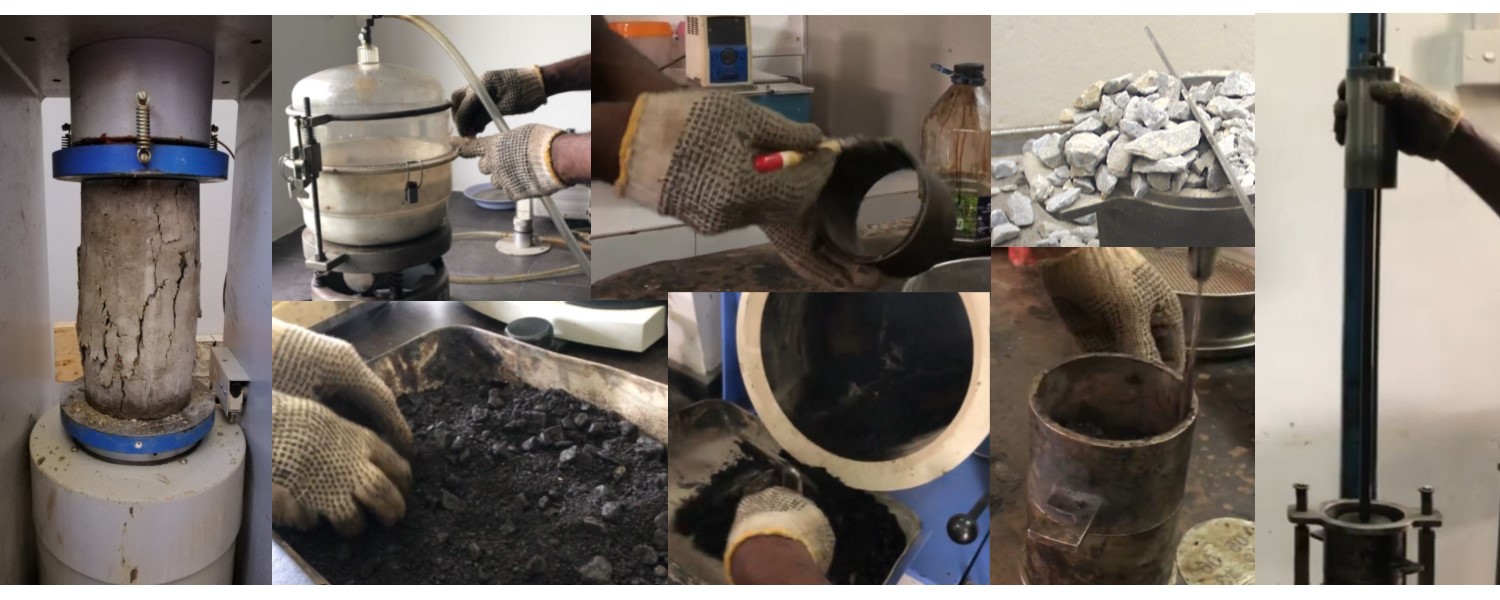
Highway construction, encompassing a wide range naturally renders the proportion of requisite material to be immense, while the type of the pavement type is pivotal when determining the necessary materials. There are seven materials which are predominant in normal highway construction: bituminous materials, soil, aggregates, Portland cement concrete, admixtures, pavement marking materials and structural steel. Moreover, materials utilized have evolved parallel to the evolution of the characterization and method of application of materials. Contemporarily, two primary types of pavement surfaces are recognized: Portland cement concrete (PCC) and hot-mix asphalt concrete (HMAC). The aggregate base and subbase layers, or treated base and subbase layers, and the underlying natural or treated subgrade, are the material layers providing structural support. Also, amidst various methods of designing pavement layers are Marshall, Hveem, or Superpave mix design systems, and the American Concrete Institute (ACI) or the Portland Cement Association (PCA) method, which may be those utilized to design HMAC and PCC respectively.
PROJECTS
PUBLICATIONS
- C. Hettiarachchi, W.K. Mampearachchi (2020). Effect of surface texture, size ratio and large particle volume fraction on packing density of binary spherical mixtures. Granular Matter, 22(1), 8.
- M.M.H.W. Bandara, and W.K. Mampearachchi (2019). Mitigate the curing problems of concrete pavements by using heated non-expansive clay particles as internal curing agent. Road Materials and Pavement Design, 1-14.
- M.M.H.W. Bandara, W.K. Mampearachchi and T.Anojan (2019). Enhance the properties of concrete using pre-developed burnt clay chips as internally curing concrete aggregate. Case Studies in Construction Materials, 11, e00284.
- S. Girimath, D. Singh, E.Manthos, W. K. Mampearachchi (2018). Effects of reclaimed asphalt binder on rheological properties and cohesion energy of crumb rubber modified binder. Innovative Infrastructure Solutions, 3(1), 57.
- H.A.C.K. Hettiarachchi, W. K. Mampearachchi (2018). Effect of vibration frequency, size ratio and large particle volume fraction on packing density of binary spherical mixtures. Powder technology, 336, 150-160.
- Dhanushika Gunatilake, W. K. Mampearachchi (2017). Finite element modelling approach to determine optimum dimensions for interlocking concrete blocks used for road paving. Road Materials and Pavement Design, 20(2), 280-296.
- W.K. Mampearachchi, S. R. Masakorala, K.Umasangar (2017). Aggregate Interlocking of Open-Graded Friction Courses with Compaction Effort, Journal of the National Science Foundation, accepted October.
- H.A.C.K. Hettiarachchi, W. K. Mampearachchi (2017). Validity of aggregate packing models in mixture design of interlocking concrete block pavers (ICBP). Road Materials and Pavement Design, 20(2), 462-474.
- H.A.C. K. Hettiarachchi, W. K. Mampearachchi (2017). Effect of aggregate surface texture, shape and vibration frequency on packing density of binary aggregate mixtures. Negombo, International Conference on Advancement of highway engineering and transport systems.
- H.A.C.K. Hettiarachchi, W.K. Mampearachchi (2017). Optimization of Aggregates for Sustainable Low Cement Concrete for Interlocking Concrete Block Pavers. Hong Kong, World Sustainable Built Environment Conference. ISBN 978-988-77943-0-1.
- M.M.H.W Bandara, W.K. Mampearachchi (2017). Develop expanded clay as internally cured Concrete Aggregate, 10th International Conference on Road and Airfield Pavement Technology, Polytechnic University, Hong Kong, August 8-10.
- W.W. Bandara, W.K. Mampearachchi, K.H.S.M. Sampath (2017). Cement Stabilized Soil as a Road Base Material for use in Sri Lankan Roads Journal of Engineer, Institute of Engineers Sri Lanka, January.
- M.M.H.W. Bandara, W.K. Mampearachchi (2016). Development of Expanded Clay as an Internally Curing Concrete Aggregate, Proceedings of Civil Engineering Symposium, Department of Civil Engineering, University of Moratuwa, December
- K. Umasangar, W.K. Mampearachchi (2016). Study of Permeability Characteristics of Open Graded Friction Courses Used in Wearing Courses, Proceedings of Civil Engineering Symposium, Department of Civil Engineering, University of Moratuwa, December
- I. I. I. Inan, W. K. Mampearachchi, P.A.S. Udayanga (2016) . Effect of Fine Percentage on the Properties of Sub-Base Material, Journal of Engineer, Institute of Engineers Sri Lanka, October.
- H. A. C. K. Hettiarachchi, W. K. Mampearachchi (2016). New block design and laying parameters for interlocking concrete block pavements to improve human thermal comfort levels in urban spaces, International Journal of Sustainable Building Technology and Urban Development, May
